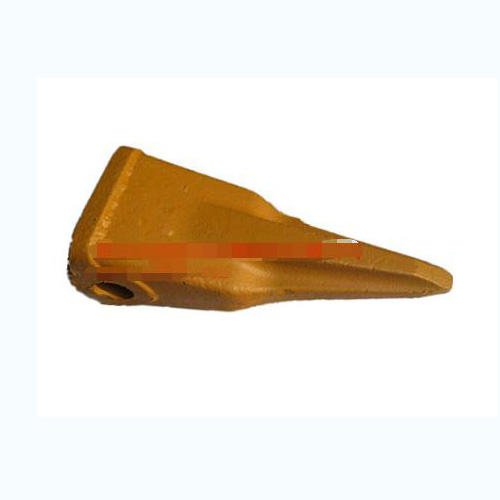Here's an overview of bucket teeth for excavators
2024-03-25
Bucket teeth are a crucial component of excavator buckets, which are used for digging, trenching, and other earth-moving operations in construction, mining, and other industries. Bucket teeth are the primary contact points between the bucket and the material being excavated, and they are subject to significant wear and tear during operation. Here's an overview of bucket teeth for excavators:
1. Types of Bucket Teeth:
- Standard Teeth: These are the most common type of bucket teeth, featuring a basic design suitable for general-purpose digging and loading applications.
- Rock Teeth: Rock teeth are designed with reinforced construction and sharper points to penetrate and break through hard, rocky terrain more effectively.
- Tiger Teeth: Tiger teeth, also known as twin tiger teeth or twin tiger rock teeth, have a double-pointed design for improved digging performance and increased wear resistance.
- Heavy-duty Teeth: Heavy-duty bucket teeth are reinforced and designed for handling tougher materials and more demanding excavation tasks.
2. Materials:
- Bucket teeth are typically made from high-strength alloy steel to withstand the abrasive and high-impact conditions encountered during excavation operations.
- Some bucket teeth may also be carbide-tipped or have hardened wear surfaces to enhance durability and longevity.
3. Installation:
- Bucket teeth are attached to the excavator bucket using various attachment systems, such as bolt-on, weld-on, or pin-on adapters.
- Bolt-on adapters use bolts to secure the teeth to the adapter plate welded onto the bucket.
- Weld-on adapters are directly welded onto the bucket, providing a permanent attachment method.
- Pin-on adapters use pins to attach the teeth to the adapter plate, allowing for quick and easy removal and replacement.
4. Wear and Replacement:
- Bucket teeth are subject to wear due to abrasion from contact with rocks, soil, and other materials during excavation.
- Regular inspection of bucket teeth is essential to identify signs of wear, damage, or breakage. Worn or damaged teeth should be replaced promptly to maintain digging efficiency and prevent further damage to the bucket and excavator.
- Replacement teeth should be selected based on the specific application and operating conditions to ensure optimal performance and longevity.
5. Maintenance:
- Proper maintenance of bucket teeth includes routine cleaning, lubrication, and inspection to remove debris, prevent corrosion, and detect any signs of wear or damage.
- Sharpening or reshaping worn bucket teeth may be necessary to maintain cutting efficiency and digging performance.
In summary, bucket teeth are critical components of excavator buckets, playing a vital role in excavation operations. Selecting the appropriate type of bucket teeth, ensuring proper installation and maintenance, and timely replacement of worn or damaged teeth are essential for maximizing the productivity and longevity of excavator buckets in various construction and mining applications.



